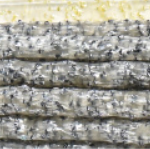Floor renovation is a great way to revive any space, be it a home, office or commercial space. It not only improves the aesthetic appearance, but also provides functional and long-lasting benefits. In this article, we’ll explore the importance of reflooring, highlight the different types of floors, and provide key tips for a successful renovation. Discover how to transform your space with style and durability when renovating your floors.

Benefits of floor renovation:
The benefits of renovating your floor are:
- Aesthetic improvement: A renovated floor can completely change the appearance of a space, adding beauty and elegance.
- Durability: By refinishing your floor, damage, wear and irregularities are eliminated, extending its useful life and reducing maintenance costs in the long run.
- Functionality: Renovating floors allows you to improve the functionality of the space by choosing suitable materials for its use, such as waterproof floors for kitchens or bathrooms.
- Property value: A well-done flooring renovation can increase the value of a property, making it more attractive to prospective buyers or tenants.
Types of floors for renovation:
These are the main types of floor renovation:
- Wooden floors: Wood provides a warm and natural feeling. Solid wood flooring and laminate flooring are popular choices due to their durability and timeless beauty.
- Ceramic Tiles: Perfect for wet areas like kitchens and bathrooms, ceramic tiles offer a wide variety of patterns, colors, and textures.
- Vinyl Flooring: A versatile and affordable option, vinyl flooring is waterproof and easy to maintain. They come in a wide range of styles, mimicking the look of wood or tile.
- Stone floors: Ideal for outdoor spaces or high-traffic areas, stone floors, such as marble or granite, add elegance and resistance.
Key steps for a successful renovation:
- Evaluate the current state of the floor: Identify any damage, wear or irregularities that need to be corrected before renovation.
- Define your style and budget: Determine the type of flooring that suits your aesthetic preferences and establish a realistic budget.
- Hire specialized professionals: Professionals can advise you on choosing the right type of flooring for your space and lifestyle.
- Proper Preparation: Before installing your new floor, it is important to properly prepare the area, which may include cleaning, leveling, and removing any old coatings.
- Careful Installation: During installation, be sure to follow the manufacturer’s instructions and use proper techniques. A precise installation process will ensure a long lasting and trouble free result.
- Finishing and sealing: Once the floor is installed, be sure to apply the appropriate finish and seal for the type of floor. This will protect the floor from damage, stains and premature wear.
Maintenance and long-term care:
- Regular cleaning: Establish a proper cleaning routine to keep your renovated floors in optimal condition. Use cleaning products recommended by the manufacturer and avoid the use of abrasive products.
- Protection against damage: Place mats at the entrances to prevent the accumulation of dirt and stones that can scratch the floor. Use furniture protectors to prevent scratches and avoid dragging heavy objects.
- Preventive Maintenance: Perform regular inspections to identify any potential problems or damage. Quickly repair any damaged or worn areas to prevent further damage.
- Periodic renovation: Over time, consider scheduling regular renovations to keep your floors in top condition and update the style of your space. In this case, the Cepiclean line can be very useful to achieve the best cleaning results.
Floor renovation is an investment that improves the aesthetics, functionality and value of your space. It is advisable to ensure that renovated floors remain in their best condition for many years. Transform your space with style and durability through a floor renovation!



